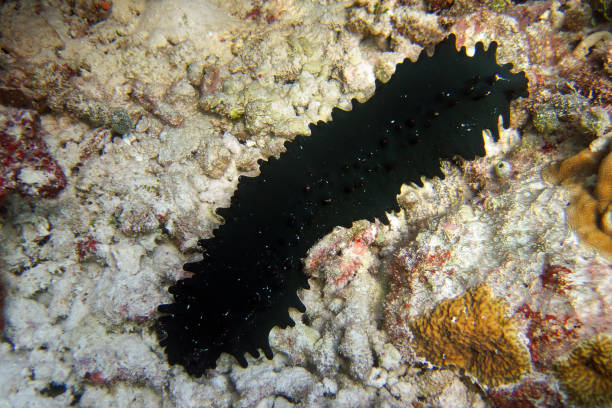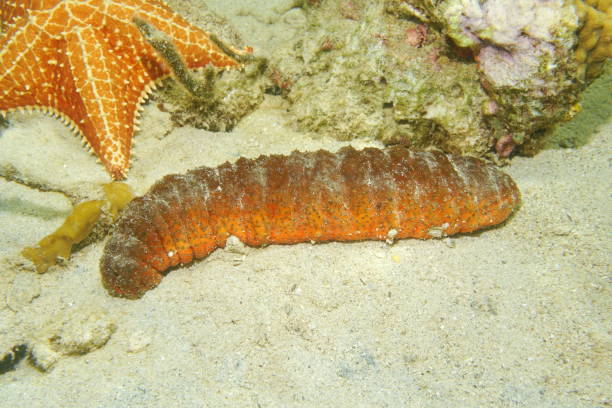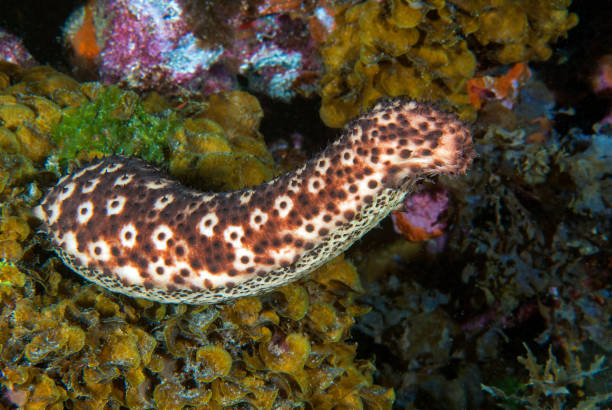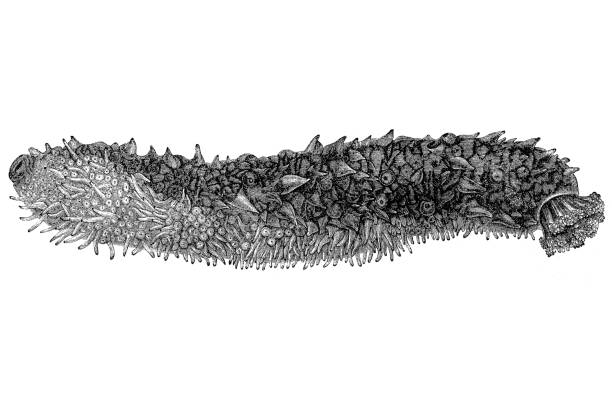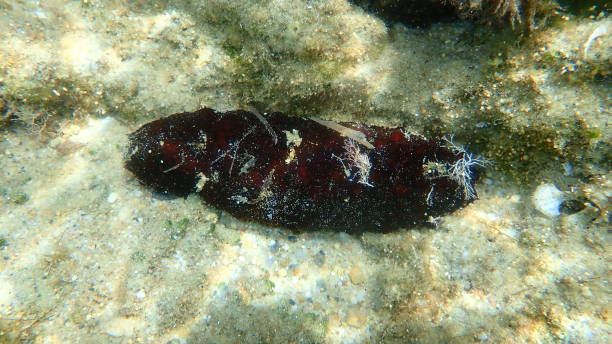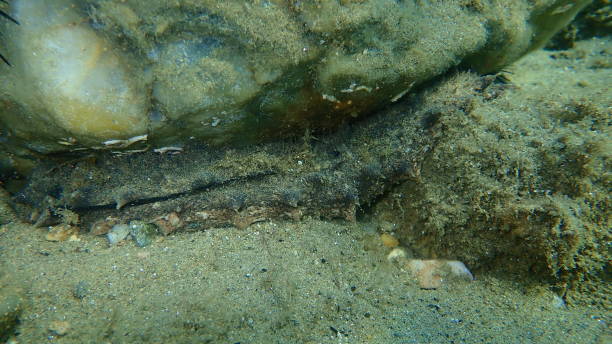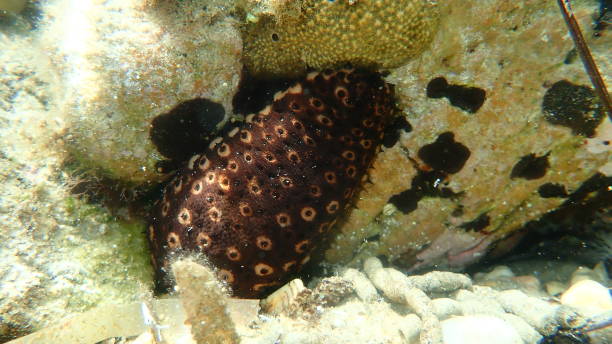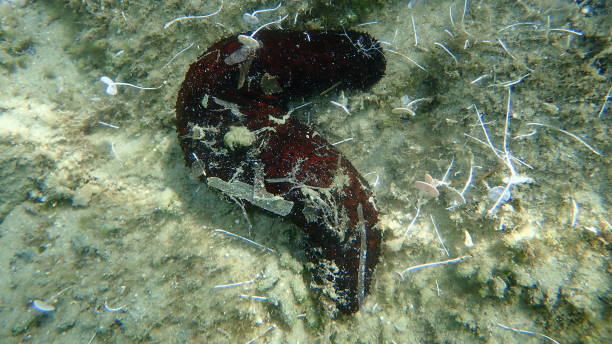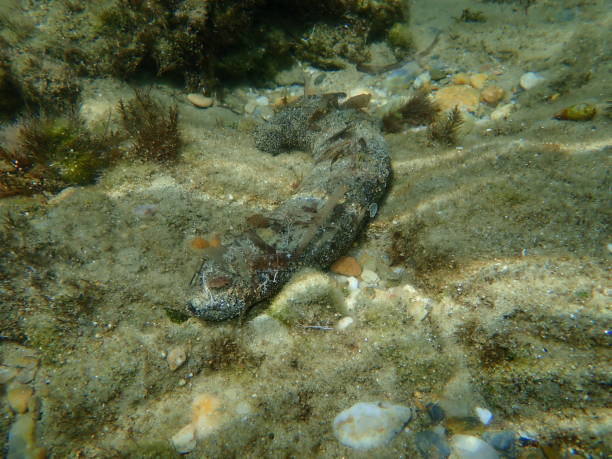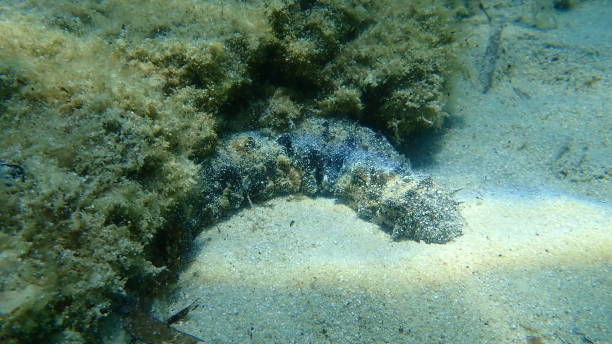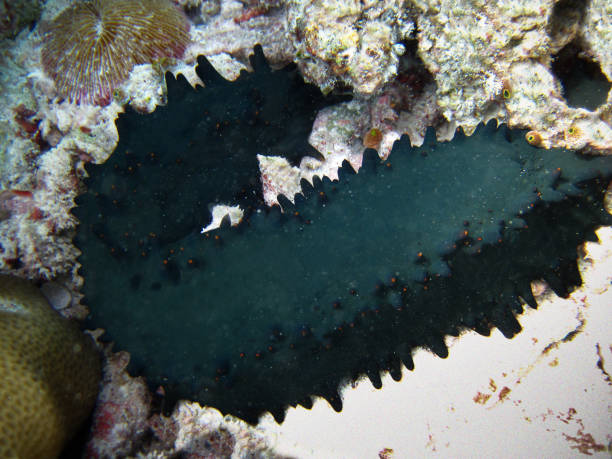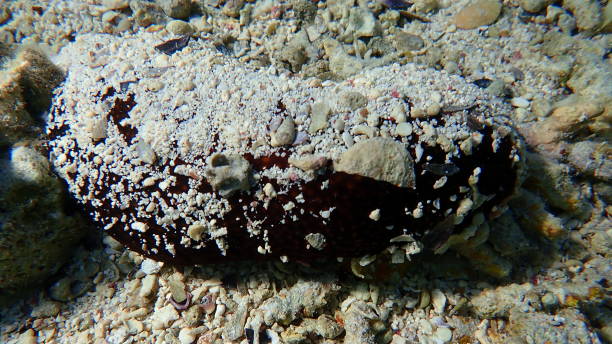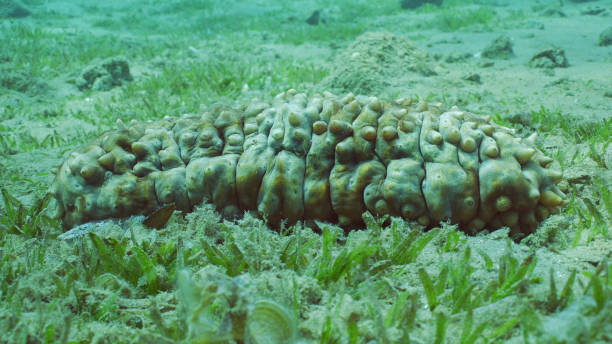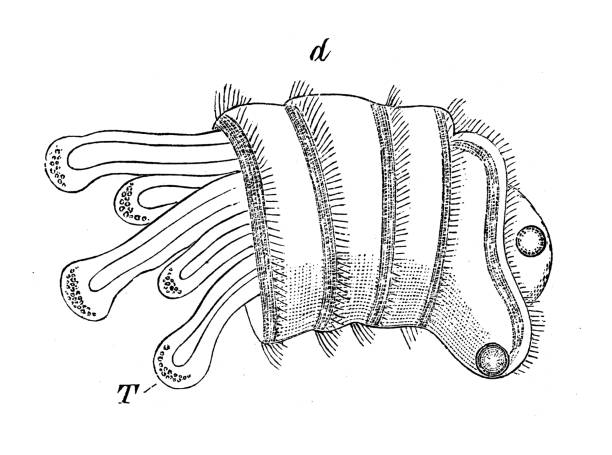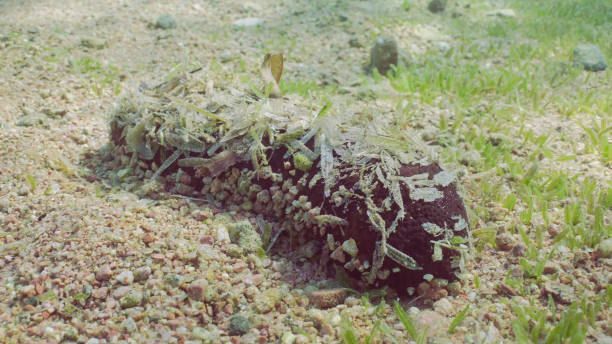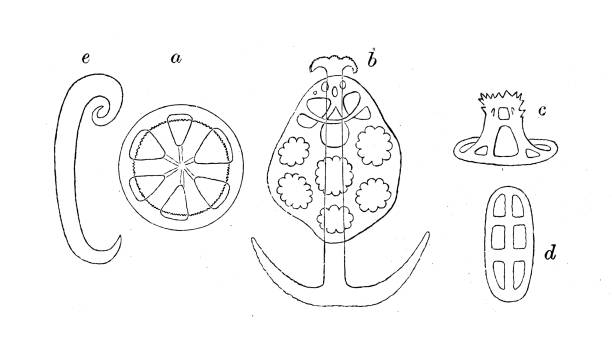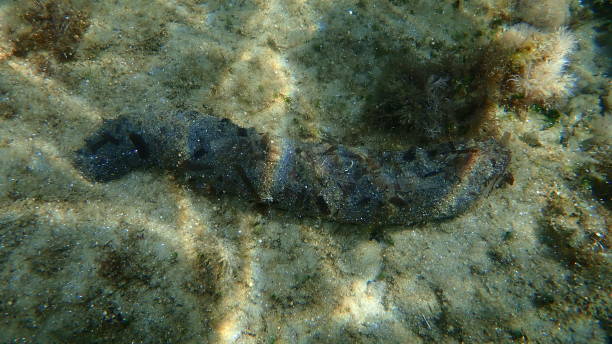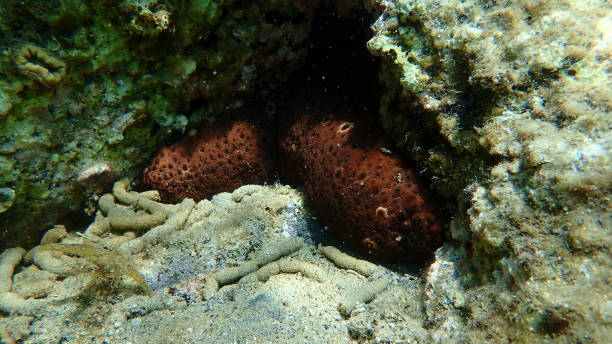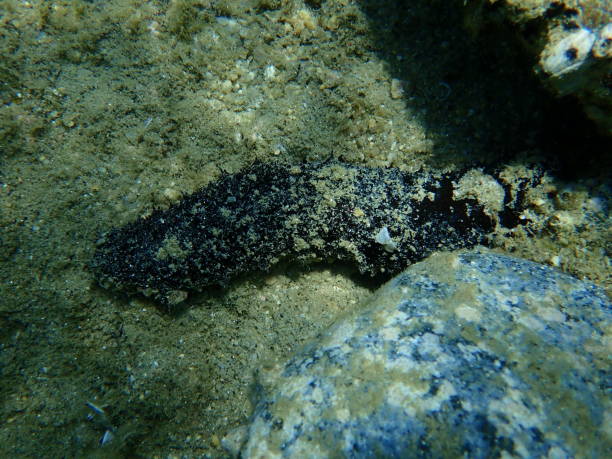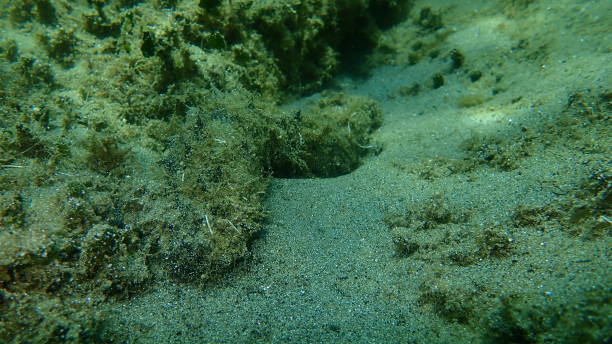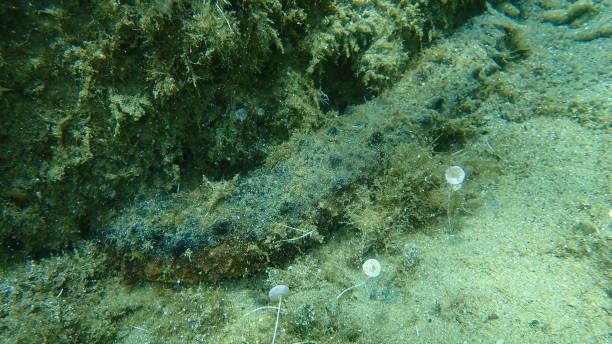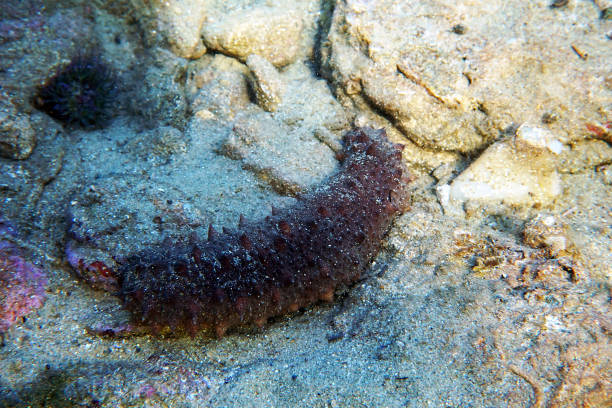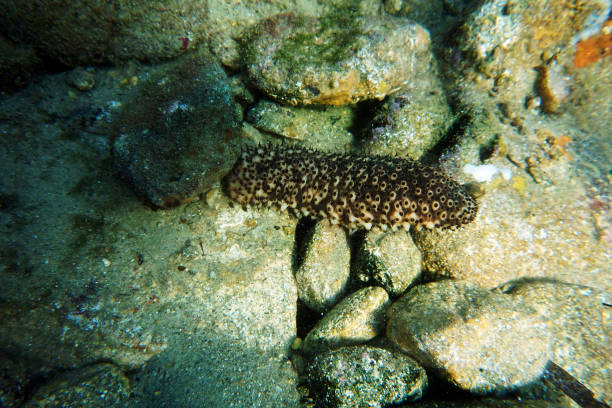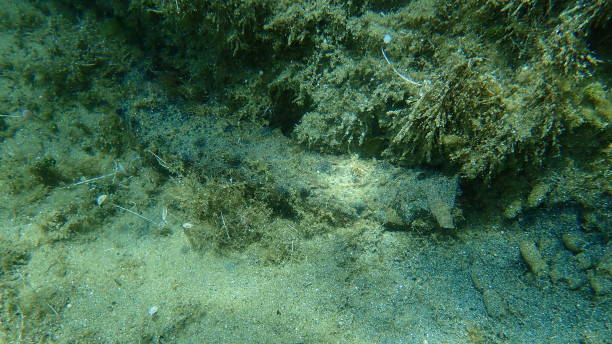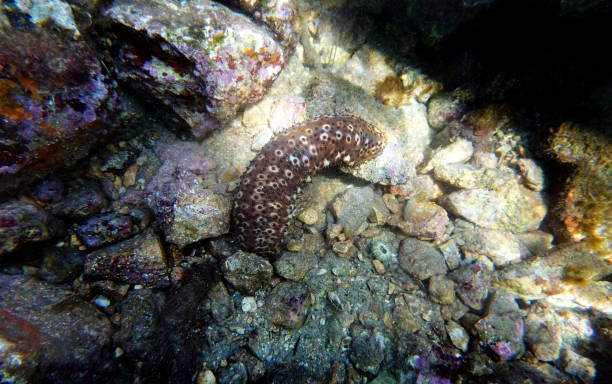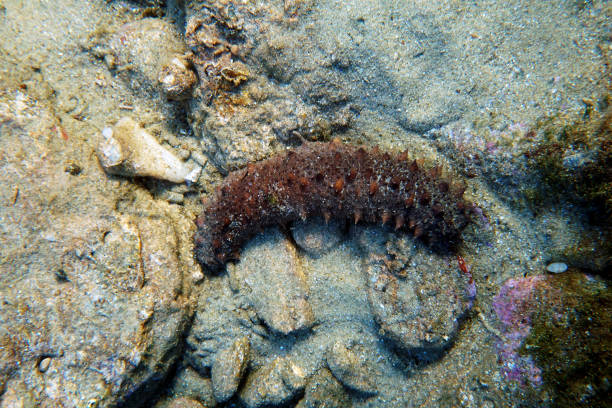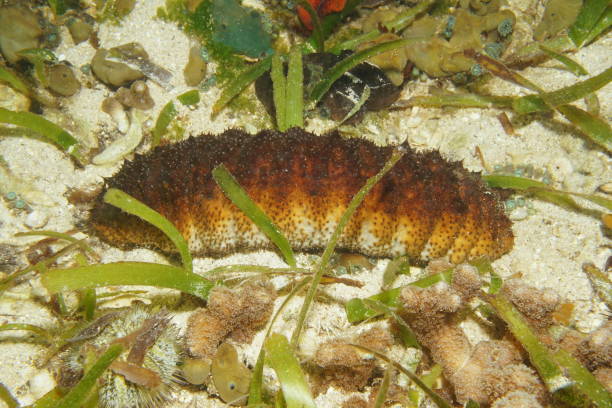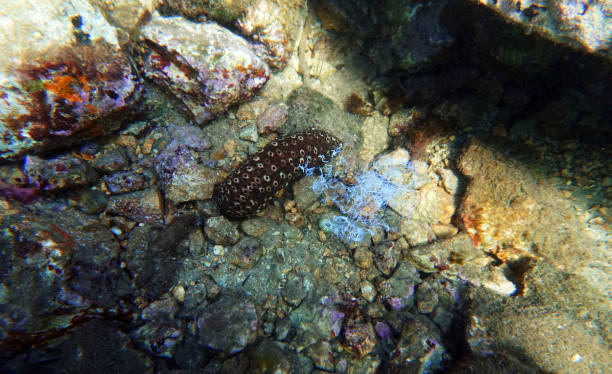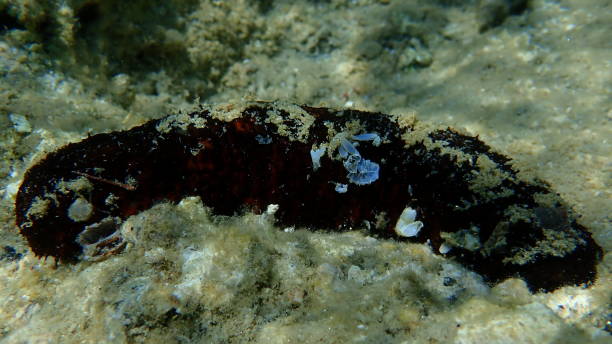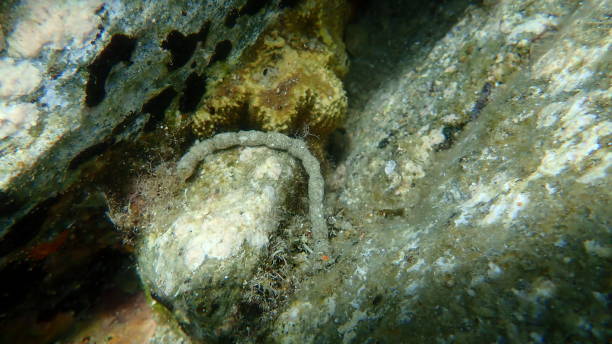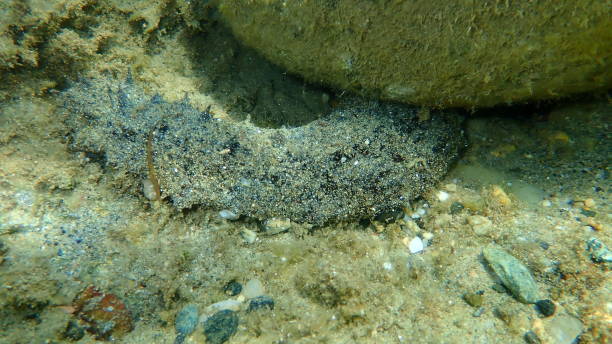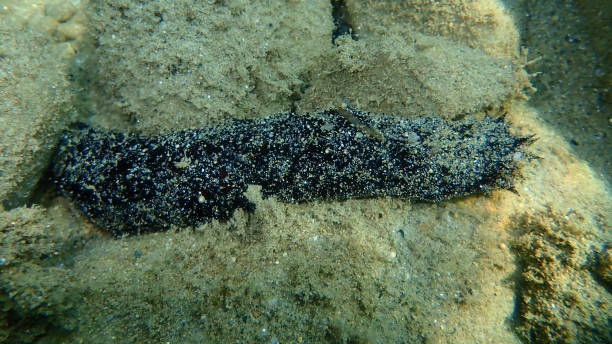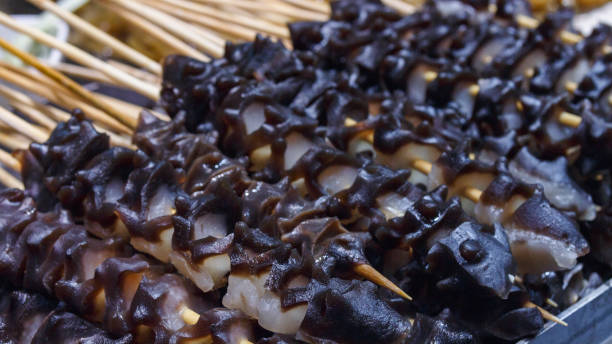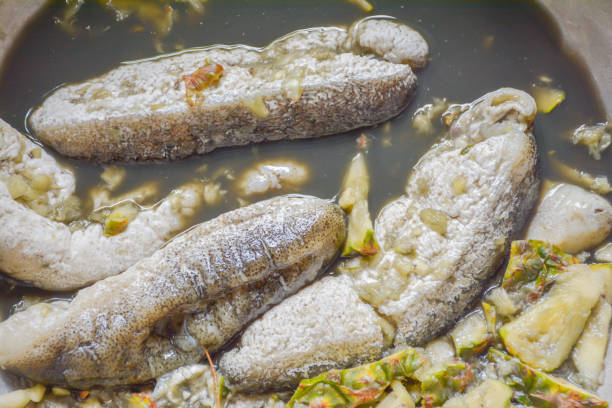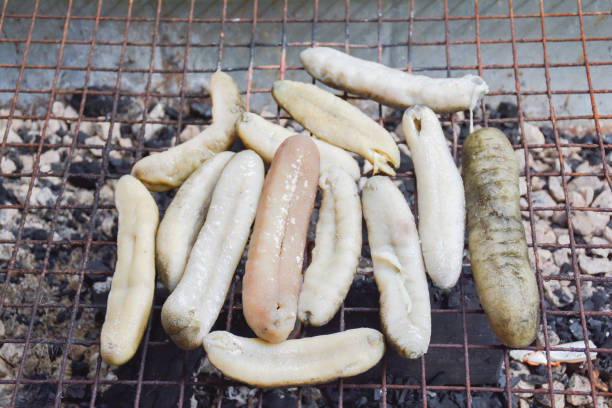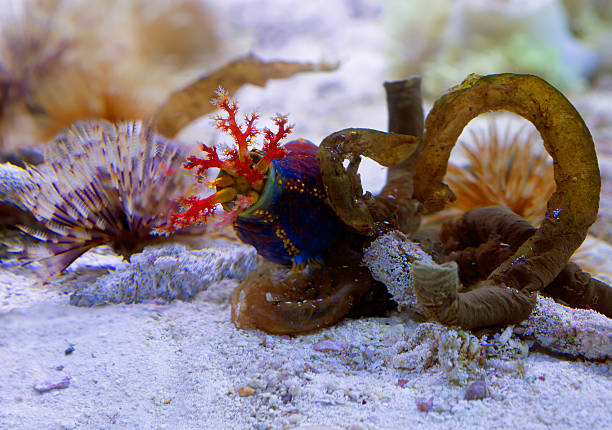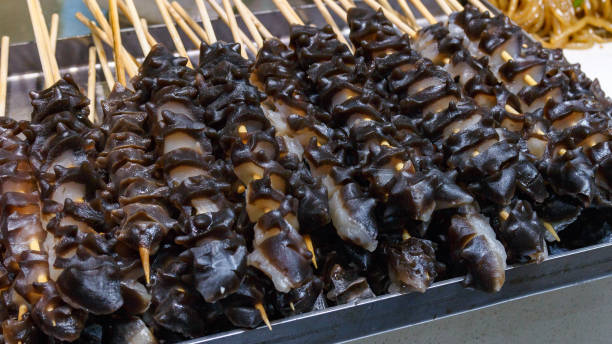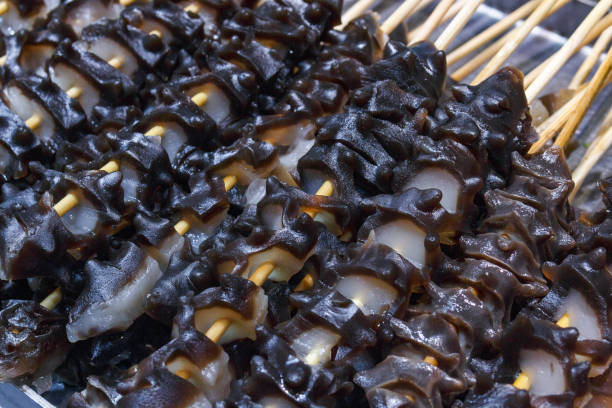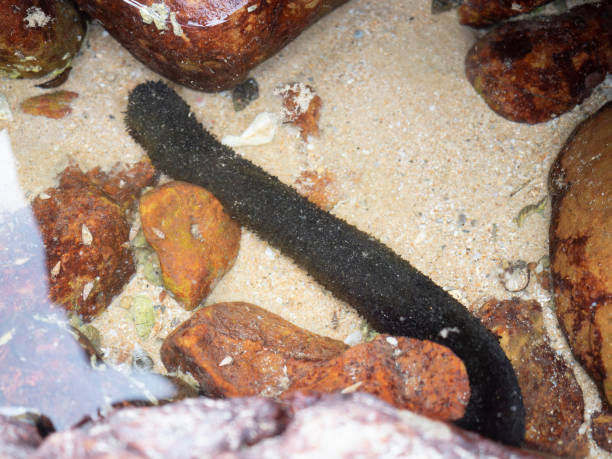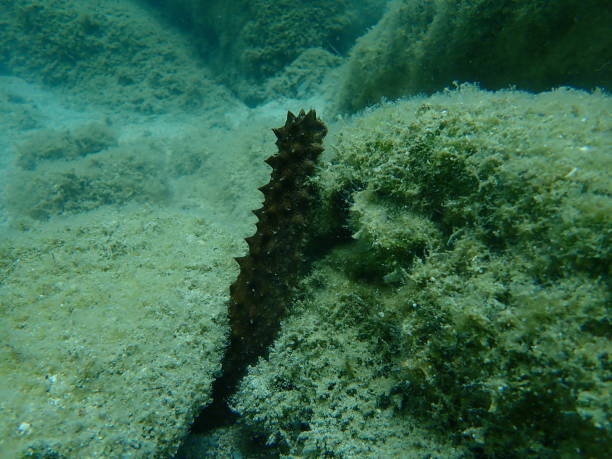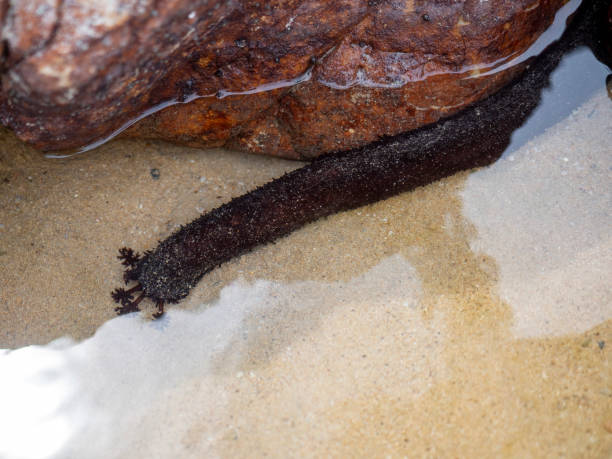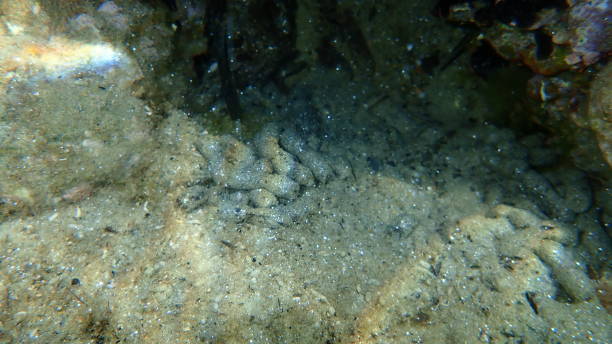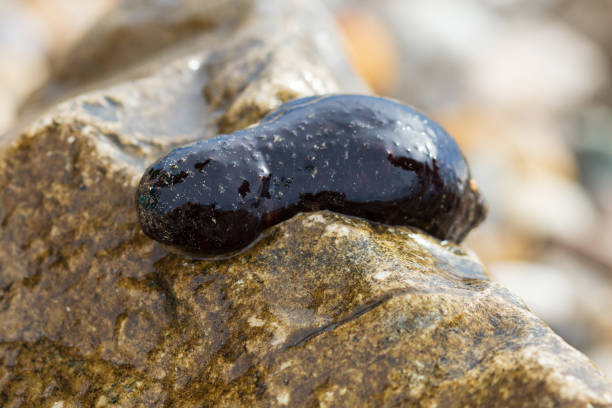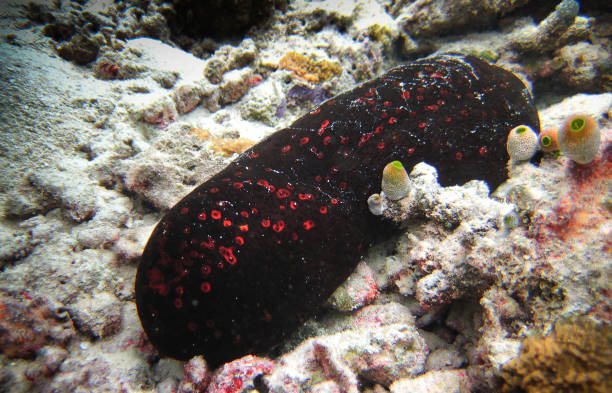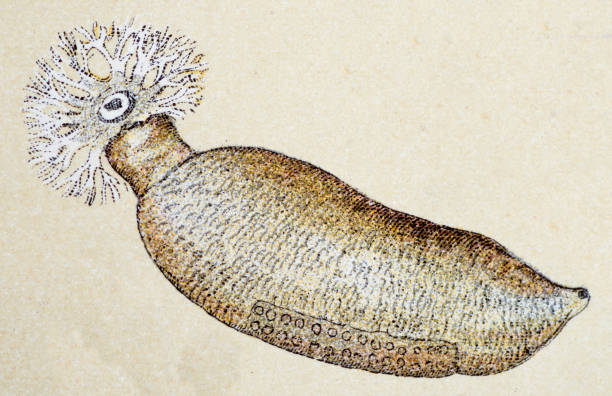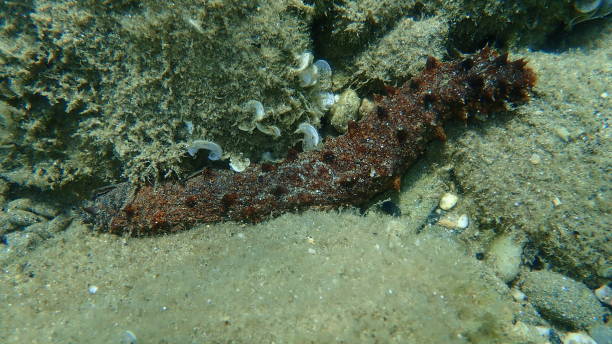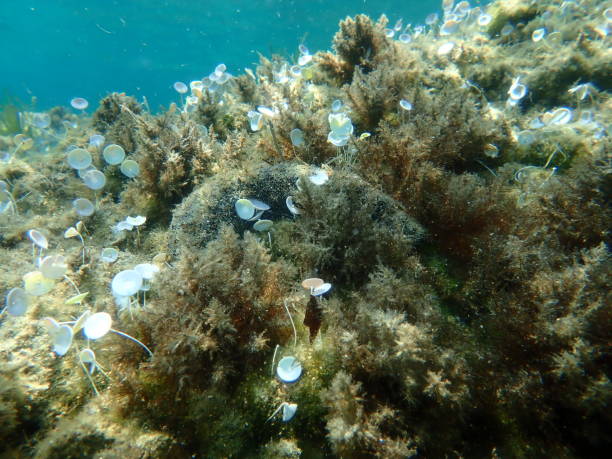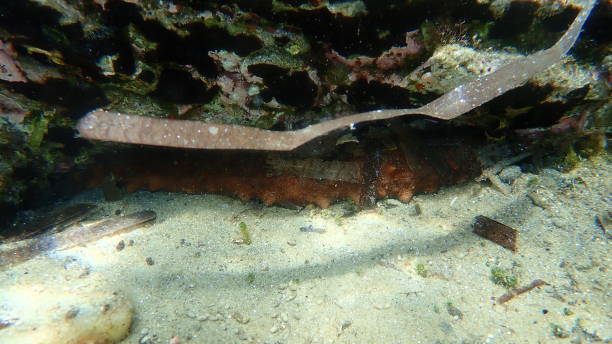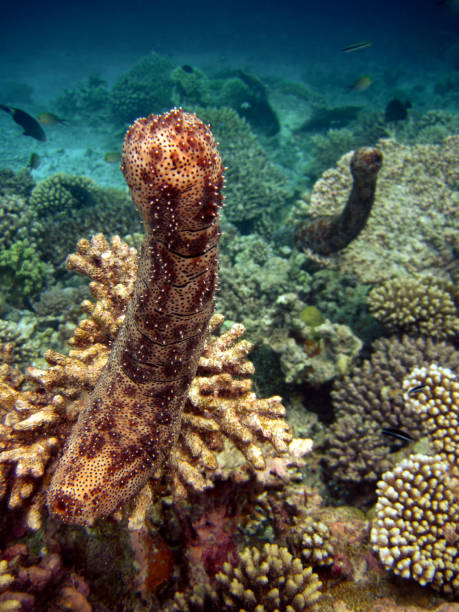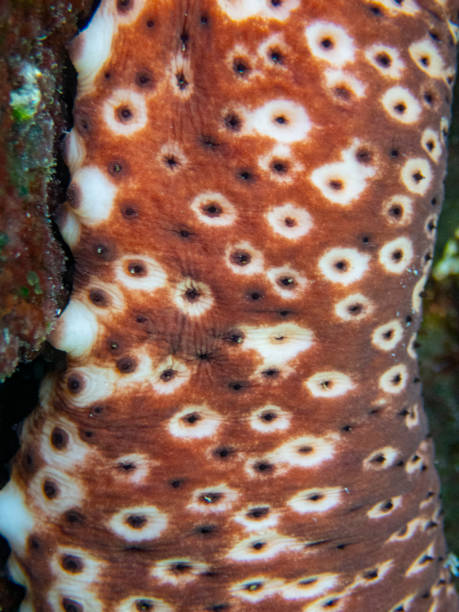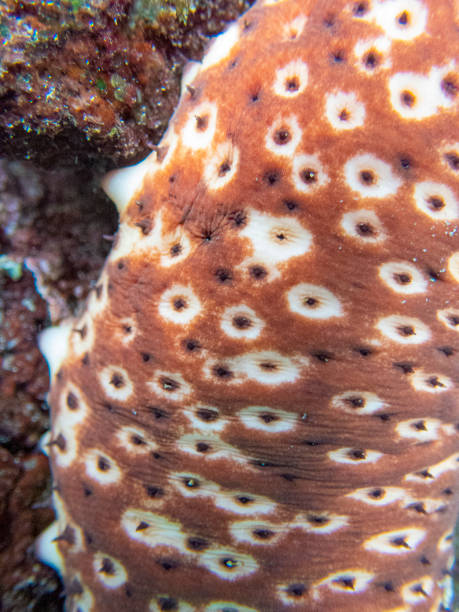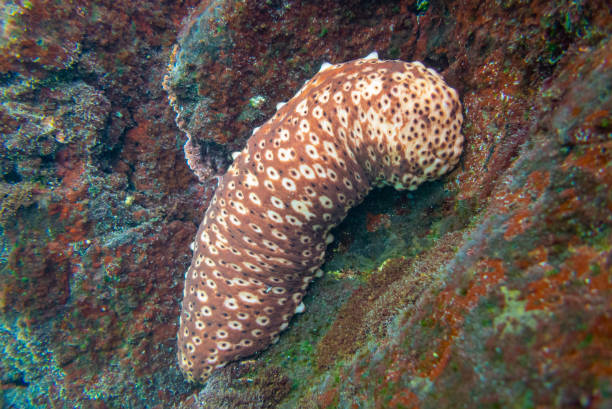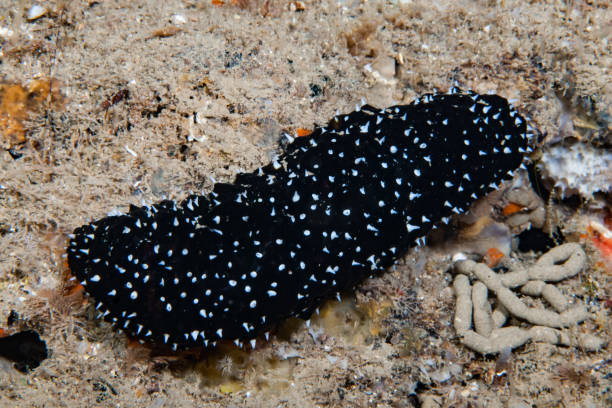
Holothuria Pictures, Images and Stock Photos
Browse 110+ holothuria stock photos and images available, or search for sea cucumber to find more great stock photos and pictures.

Holothuria forskalii, also known as the black sea cucumber or cotton-spinner, is a species of sea cucumber in the family Holothuriidae. It is found at shallow depths in the eastern Atlantic Ocean and the Mediterranean Sea. It was placed in the subgenus Panningothuria by Rowe in 1969 and is the typetaxon of the subgenus. This sea cucumber has a cylindrical body and can grow to thirty centimetres long. It is usually deep brown or black but sometimes has an underlying yellowish mottling, especially on the underside. The skin is soft yet coarse and tough and is covered with fleshy papillae which are often tipped with white. The papillae are believed to be sensory organs sensitive to touch and possibly to chemicals dissolved in the water. The underside has three rows of tube feet for walking and climbing while the upper side has two rows of rudimentary suckers. Holothuria forskalii is a deposit feeder, meaning that it feeds on organic matter that is found in the sediment. It uses its tube feet to move around the seabed and its tentacles to collect food. The tentacles are covered with mucus that helps to trap small particles of food. The food is then transported to the mouth, where it is broken down and digested. Holothuria forskalii is a hermaphrodite, meaning that it has both male and female reproductive organs. When two individuals mate, they exchange sperm and eggs. The eggs are fertilized externally and develop into larvae. The larvae are planktonic, meaning that they drift with the currents. After a period of time, the larvae settle on the seabed and metamorphose into juvenile sea cucumbers. Holothuria forskalii is an important part of the marine ecosystem. It helps to recycle nutrients and to keep the seabed clean. It is also a food source for a variety of marine animals, including fish, crabs, and sea turtles.
Holothuria - Stichopus Chloronotus - Sea Cucumber on a coral reef of Maldives
Underwater marine life, Donkey dung sea cucumber, Holothuria mexicana, on the seabed of the Caribbean sea, Mexico
Coton spiner (Holothuria sanctori). Marine invertebrates of the Canary Islands, Tenerife.
Illustration of a Holothuria tubulosa, the cotton-spinner or tubular sea cucumber
Variable sea cucumber (Holothuria sanctori) on sea bottom, Aegean Sea, Greece, Halkidiki
Sea cucumber cotton-spinner or tubular sea cucumber (Holothuria tubulosa) on bottom, Aegean Sea, Greece, Halkidiki
Variable sea cucumber (Holothuria sanctori) on sea bottom, Aegean Sea, Greece, Halkidiki
Variable sea cucumber (Holothuria sanctori) on sea bottom, Aegean Sea, Greece, Halkidiki
White spot cucumber, Holothuria (Roweothuria) poli, undersea, Aegean Sea, Greece, Halkidiki
Cotton spinner or tubular sea cucumber, Holothuria (Holothuria) tubulosa, undersea, Aegean Sea, Greece, Halkidiki
Lollyfish or black sea cucumber (Holothuria atra) undersea, Red Sea, Egypt, Sharm El Sheikh, Nabq Bay
Cotton-spinner or tubular sea cucumber (Holothuria tubulosa) undersea, Aegean Sea, Greece, Halkidiki
Variable sea cucumber Holothuria (Platyperona) sanctori on sea bottom, Aegean Sea, Greece, Halkidiki
Black sea cucumber or cotton-spinner (Holothuria forskali) undersea, Aegean Sea, Greece, Halkidiki
Cotton-spinner or tubular sea cucumber (Holothuria tubulosa) undersea, Aegean Sea, Greece, Halkidiki
Cotton-spinner or tubular sea cucumber (Holothuria tubulosa) undersea, Aegean Sea, Greece, Halkidiki
Holothuria sanctori is a species of sea cucumber in the genus Holothuria
Holothuria sanctori is a species of sea cucumber in the genus Holothuria
Cotton-spinner or tubular sea cucumber (Holothuria tubulosa) undersea, Aegean Sea, Greece, Halkidiki
Holothuria sanctori is a species of sea cucumber in the genus Holothuria
Holothuria sanctori is a species of sea cucumber in the genus Holothuria
Donkey dung sea cucumber, Holothuria mexicana, underwater on the seabed in the Caribbean sea
Holothuria sanctori is a species of sea cucumber in the genus Holothuria
Variable sea cucumber Holothuria (Platyperona) sanctori on sea bottom, Aegean Sea, Greece, Halkidiki
Feces of sea cucumber (Holothuria sp.) undersea, Aegean Sea, Greece, Halkidiki
White spot cucumber, Holothuria (Roweothuria) poli, undersea, Aegean Sea, Greece, Halkidiki
White spot cucumber, Holothuria (Roweothuria) poli, undersea, Aegean Sea, Greece, Halkidiki
Fast food in the Asian market. Snack on wooden chopsticks resembles a sea cucumber prepared for frying A popular snack for tourists.
the sea cucumber in pineapple water
the sea cucumber grill on the grille
the sea cucumber in pineapple water
Holothuria or a sea Apple or sea cucumber is a resident of coral reefs.
the sea cucumber grill on the grille
Fast food in the Asian market. Snack on wooden chopsticks resembles a sea cucumber prepared for frying A popular snack for tourists.
Fast food in the Asian market. Snack on wooden chopsticks resembles a sea cucumber prepared for frying A popular snack for tourists.
Sea cucumber cotton-spinner or tubular sea cucumber (Holothuria tubulosa) underwater, Aegean Sea, Greece, Halkidiki
Feces of sea cucumber (Holothuria sp.) undersea, Aegean Sea, Greece, Halkidiki
Sea cucumber cotton-spinner or tubular sea cucumber (Holothuria tubulosa) male releasing sperm undersea, Aegean Sea, Greece, Halkidiki
Close up of sea cucumber on a stone on the beach.
Sea cucumber - black with red spots on coral reef of Maldives
Cotton spinner or tubular sea cucumber, Holothuria (Holothuria) tubulosa, undersea, Aegean Sea, Greece, Halkidiki
Sea cucumber cotton-spinner or tubular sea cucumber (Holothuria tubulosa) on sea bottom, Aegean Sea, Greece, Halkidiki
White spot cucumber, Holothuria (Roweothuria) poli, undersea, Aegean Sea, Greece, Halkidiki
Cotton spinner or tubular sea cucumber, Holothuria (Holothuria) tubulosa, undersea, Aegean Sea, Greece, Halkidiki
Sea cucumber cotton-spinner or tubular sea cucumber (Holothuria tubulosa) on bottom, Aegean Sea, Greece, Halkidiki
Echinoderm - Holothuria - Bahadschia Graeffei - Pearsonothuria Graeffei - Sea cucumber underwater in Maldives.
sea cucumber in the genus Holothuria. Holothuria sanctori
sea cucumber in the genus Holothuria. Holothuria sanctori
sea cucumber in the genus Holothuria. Holothuria sanctori
sea cucumber in the genus Holothuria. Holothuria sanctori
